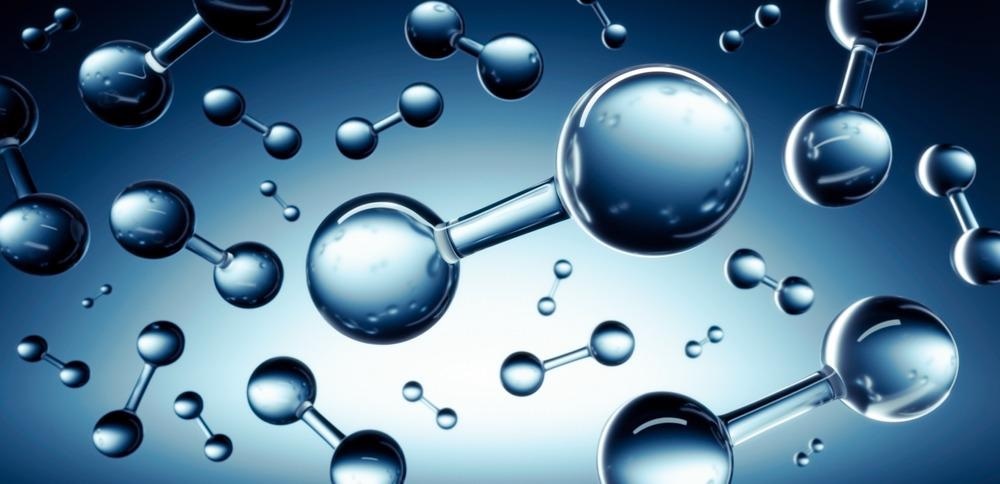The advancement of electrochemical hydrogen generation techniques is critical to resolving sustainability and energy issues. In a study available as a corrected proof in the International Journal of Hydrogen Energy, a simple pyrolytic process was used to create a remarkably effective hydrogen evolution electrocatalytic material, Pd@MoS2/Mo2TiC2Tx.

Study: MoS2/Mo2TiC2Tx supported Pd nanoparticles as an efficient electrocatalyst for hydrogen evolution reaction in both acidic and alkaline media. Image Credit: peterschreiber.media/Shutterstock.com
The Dawn of Hydrogen Energy
Novel energy solutions like wind, nuclear, solar, and hydrogen energy have gained prominence lately.
Owing to its abundant supplies, improved combustion potential, contamination-free products, and ease of conveyance, hydrogen energy is considered the ideal clean energy source. Its many benefits mean that it will play a vital role in the forthcoming energy framework.
Global industrialized H2 generation strategies mostly concentrate on fossil fuel hydrogen generation, bio-hydrogen synthesis, and photocatalytic hydrogen generation, although these techniques are not always ecologically friendly.
Among the different ways of producing hydrogen, water electrolysis is a facile and ecologically beneficial approach that has been utilized for over two centuries.
H2 generation via electrolysis of water driven by sustainable power resources such as photovoltaic and wind energy is predicted to produce large-scale generation of highly pure H2 while emitting zero CO2 throughout the procedure. As a result, the creation of extremely effective electrocatalytic substances for hydrogen evolution is critical for the eventual building of a hydrogen-powered future.
Improving Hydrogen Evolution Reaction Kinetics Using Nanoscale Catalysts
Scientists are devoted to investigating novel catalysts to substantially lower the overpotential needed for the hydrogen evolution reaction (HER) to speed up the reaction kinetics and increase catalysis efficiency.
The key obstacles in producing HER catalysts are completely utilizing the substance's catalytically active spots and achieving efficient charge transference, both of which may be overcome by optimizing the catalyst's morphology on the nanoscale and utilizing suitable conducting carriers.
Thanks to their numerous active regions, nanoscale catalysts have an increased inherent catalytic activity.
MXene, a 2D nanomaterial, distinguishes itself from other 2D analogues owing to its distinct architecture and abundance of surface functional groups, and it offers excellent advancement and research possibilities.
MXene denotes 2D multilayer materials formed from transition metal nitrides, carbides, or carbonitrides, and is commonly stated in the generic formulation Mn+1Xn, where M indicates transition metals such as Sc, Ti, Cr, and Mo, and X indicates C or N, where n may be equal to 1, 2, and 3.
Usually, multilayer MXene flakes are created by selective removal of the A layer in the MAX phase. Furthermore, following the removal of the A-layer atoms, a variety of functional groups may be incorporated on the exterior of MXene. These functional groups might increase MXene's hydrophilic nature and electronegativity.
Such qualities lend themselves well to the fabrication of HER catalysts with outstanding structural features.
A Facile Method of Optimizing Molybdenum MXenes
Of the several MXenes, Mo-based MXene has great potential as a catalyst.
Scientists have conceptually and practically shown that Mo-based MXene has a broader usage promise in electrocatalysis than Ti-based MXenes, and it is likely to prove to be effective in HER catalysis to substitute Pt-based catalysts down the line.
Nonetheless, the MXene catalyst's HER effectiveness is substantially inferior to the effectiveness of the precious metal counterparts, which are unable to match the actual applicability demands.
The fundamental problem is that MXene material does not have enough HER active areas. To address this issue, several scientists have added precious metals onto MXene or built 2D complexes to uncover additional HER reaction areas.
Highlights of the Study
In this study, employing a facile pyrolytic approach, a Pd@MoS2/Mo2TiC2Tx electrocatalyst with Pd nanoparticles (NPs) anchored on the MoS2/Mo2TiC2Tx platform was created.
The evenly dispersed Pd NPs on the MoS2/Mo2TiC2Tx platform not only increased the number of active areas but also enhanced the electric conductance of Pd@MoS2/Mo2TiC2Tx, resulting in outstanding HER efficacy.
Remarkably, in acidic as well as basic media, the Pd@MoS2/Mo2TiC2Tx catalyst showed high HER performance, greatly decreased overpotential, and outstanding stability during catalysis.
This study described a facile approach for making a highly effective Mo2TiC2Tx-based electrocatalyst for hydrogen evolution reactions, which is predicted to speed up the production of MXene-based compounds for electrocatalytic activities.
Reference
Zheng, L.-H., Tang, C.-K., Lü, Q.-F., & Wu, J. (2022). MoS2/Mo2TiC2Tx supported Pd nanoparticles as an efficient electrocatalyst for hydrogen evolution reaction in both acidic and alkaline media. International Journal of Hydrogen Energy. Available at: https://www.sciencedirect.com/science/article/pii/S0360319922004050?via%3Dihub
Disclaimer: The views expressed here are those of the author expressed in their private capacity and do not necessarily represent the views of AZoM.com Limited T/A AZoNetwork the owner and operator of this website. This disclaimer forms part of the Terms and conditions of use of this website.